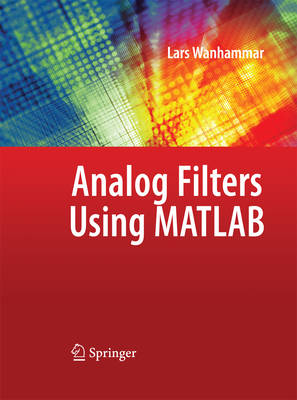
Door een staking bij bpost kan je online bestelling op dit moment iets langer onderweg zijn dan voorzien. Dringend iets nodig? Onze winkels ontvangen jou met open armen!
- Afhalen na 1 uur in een winkel met voorraad
- Gratis thuislevering in België vanaf € 30
- Ruim aanbod met 7 miljoen producten
Door een staking bij bpost kan je online bestelling op dit moment iets langer onderweg zijn dan voorzien. Dringend iets nodig? Onze winkels ontvangen jou met open armen!
- Afhalen na 1 uur in een winkel met voorraad
- Gratis thuislevering in België vanaf € 30
- Ruim aanbod met 7 miljoen producten
Zoeken
Omschrijving
ThisbookwaswrittenforuseinacourseatLinkopingUniversityandtoaidthe ] electricalengineertounderstandanddesignanalogfilters.Mostoftheadvanced mathematicsrequiredforthesynthesisofanalogfiltershasbeenavoidedby providingasetofMATLABfunctionsthatallowssophisticatedfilterstobe designed.MostofthesefunctionscaneasilybeconvertedtorununderOctaveas well. Thefirstchaptergivesanoverviewoffiltertechnologies, terminology, andbasicconcepts.Approximationofcommonfrequencyselectivefilters andsomemoreadvancedapproximationsarediscussedinChapter2.The reader is recommended to compare the standard approximation with respecttothegroupdelay, e.g., Example2.5, andlearntousethecor- sponding MATLAB functions. Geometrically symmetric frequency tra- formationsarediscussedaswellasmoregeneralsynthesisusingMATLAB functions. Chapter 3 deals with passive LC filters with lumped elements. The reader may believe that this is an outdated technology. However, it is stillbeingusedandmoreimportantlythetheorybehindalladvancedfilter structures is based on passiveLC filters. This is also the case for digital and switched-capacitor filters. The reader is strongly recommended to carefully study the principle of maximum power transfer, sensitivity to element errors, and the implications of Equation (3.26). MATLAB fu- tionsareusedforthesynthesisofladderandlatticestructures.Chapter4 deals with passive filters with distributed elements. These are useful for veryhigh-frequencyapplications, butalsointhedesignofcorresponding wavedigitalfilters. InChapter5, basiccircuitelementsandtheirdescriptionasone-, two-, and three-portsarediscussed. Chapter 6 discusses first- and second-order sections using single and multiple amplifiers. The reader is recommended to study the implication ofthe gain-sensitivityproductandthetwo-integratorloop.Chapter7d- cusses coupled forms and signal scaling, and Chapter 8 discusses various methods for immitance simulation. Wave active filters are discussed in v vi Preface Chapter9andleapfrogfiltersinChapter10.Finally, tuningtechniquesare discussedinChapter11. Textwithasmallerfontiseithersolvedexamplesormaterialthatthereader mayskipoverwithoutlosingthemain
Specificaties
Betrokkenen
- Auteur(s):
- Uitgeverij:
Inhoud
- Aantal bladzijden:
- 316
- Taal:
- Engels
Eigenschappen
- Productcode (EAN):
- 9781489983091
- Verschijningsdatum:
- 11/09/2014
- Uitvoering:
- Paperback
- Formaat:
- Trade paperback (VS)
- Afmetingen:
- 193 mm x 260 mm
- Gewicht:
- 701 g

Alleen bij Standaard Boekhandel
+ 167 punten op je klantenkaart van Standaard Boekhandel
Beoordelingen
We publiceren alleen reviews die voldoen aan de voorwaarden voor reviews. Bekijk onze voorwaarden voor reviews.











